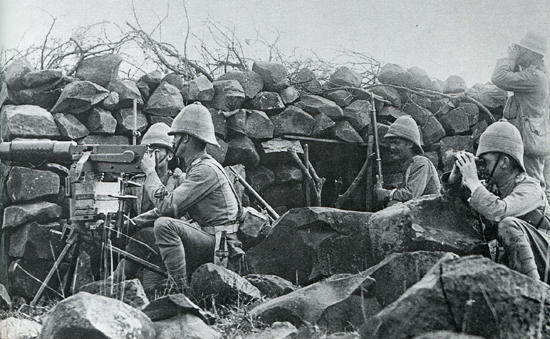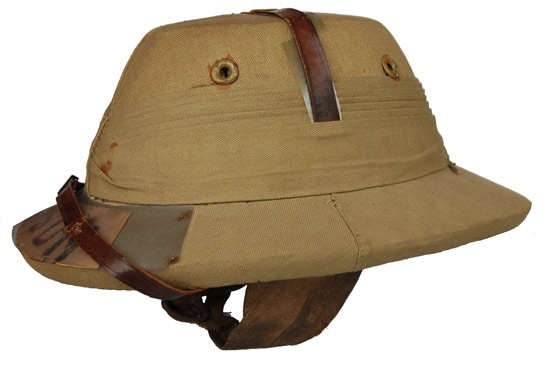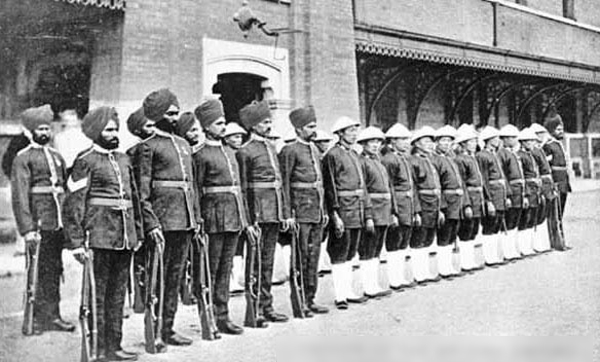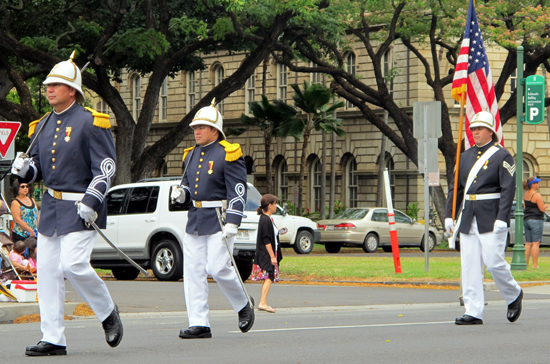Over the years of the Colonial Pattern Foreign Service Helmet there were many variations in style; by era, by construction material and by manufacturer. In the latter days of the 19th Century no style was more pronounced, nor more impractical than the so-called “smart” helmet. Continue reading
The Helmet, Cork, Aviation (22C/13) – Type A Flying Helmet
A lesser known, but still very rare helmet is the inter-war used British Flying Helmet known as the “Helmet, Cork, Aviation (22C/13),” or more popularly known as the Type “A” Flying Helmet. The “helmet, cork, aviation” was introduced in the early 1920s and reportedly issued only to aircrews based east of Malta. Continue reading
British Puggarees 2, 3, 4 and 6 Folds
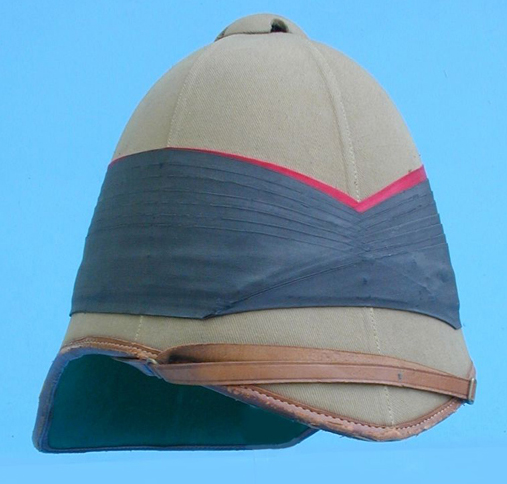
This Colonial Pattern helmet, of the 49th Ottawa-Carleton Rifles, illustrates the most common form of the puggaree with two folds: front and rear. (Collection of Clive M. Law)
The puggaree (or pagri, pugri etc.) was an addition to the headgear of the British soldier primarily being for protection against sword cuts but also protection from the heat of the sun. Just how effective it was in this latter use is debatable. In its many forms it was also a decorative item and was additionally used to distinguish regiments and corps. The cloth wrapped around the crown of the helmet was most commonly folded over in two places: at the front and the rear. However, examples of the puggaree being folded in three, four and six positions are known to have existed. In this article the six seams of the helmet cover are equated to positions on a clock face with 12 o’clock being the rear seam and 6 o’clock being the front seam etc. Continue reading
Conical Asian Hat of the Hong Kong Police
The conical Asian hat, known as a “rice hat,” “paddy hat” or even “coolie hat” originated in East and Southeast Asia, particularly China, Indonesia, Japan, Korea and Vietnam. While primarily used by civilians, the hat has been a military head dress and was used by Vietcong forces in the Vietnam War. But the conical hat was also used alongside the military sun helmet by Chinese and other native units. One in particular was the Hong Kong Police, which was established in 1844. Continue reading
Hanley, DSO, MC
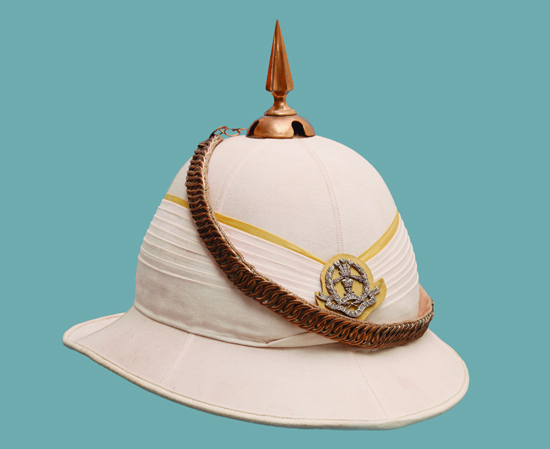
This full dress Wolseley helmet was worn by Lt. Hubert Arthur Oldfield Hanley, DSO, MC, who served in the 1st,2nd and 4th Battalion, the Middlesex Regiment. Note the lemon yellow piping to the puggaree and the cloth backing to the puggaree badge. Lemon yellow was the colour of the facings for the Middlesex Regiment (Author’s collection)
Hubert Arthur Oldfield Hanley was born in Headington, Oxfordshire in 1881, the only son of Charles Hanley, and in 1909 married Mary Constance, the eldest daughter of Charles Walker of Burwash, Sussex. He was educated at Downside school in Somerset and served in the First World War, being mentioned in despatches three times and was awarded the Distinguished Service Order and the Military Cross. He was commissioned as Second Lieutenant into the 6th Battalion (Militia), the Royal Warwickshire Regiment, on the 22nd April 1902. Continue reading
The Royal Guards of Hawaii
At present only one unit American military unit wears a “sun helmet” – the Royal Guard of the Hawaii National Guard, a ceremonial unit of the Air National Guard. It essentially “re-enacts” the royal bodyguards of the Kingdom of Hawaii from the late 19th century. Continue reading
A Study of the British Officer on Active Service in South Africa 1899 – 1902
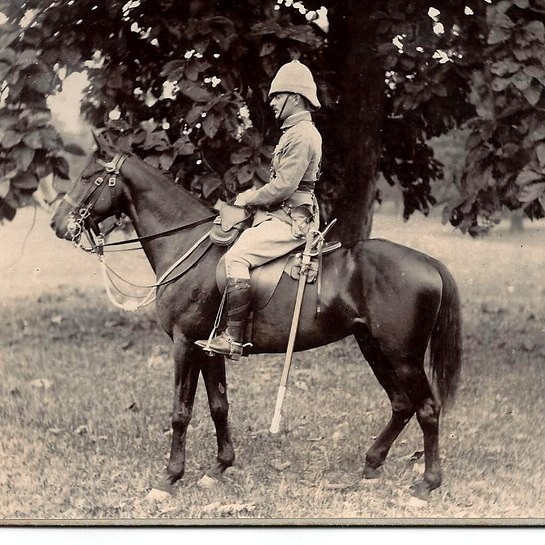
Mounted officer wearing khaki drill frock, Sam Browne belt rig, foreign service helmet and pantaloons tucked into Stohwasser gaiters. (Photo: James Holt collection)
Throughout the Twentieth Century, the world’s Super Powers have waged war against a sometimes seemingly invisible, highly mobile enemy. An enemy familiar with the lands he defends and what it takes to survive in them. France and later the United States struggled through Viet Nam and the former Soviet Union endured the hardships offered by Afghanistan. At the dawn of the Twentieth Century Britain ventured into South Africa. The campaign that followed was an omen of how war would be waged in the new century. A tree of terms we are all too familiar with now has roots embedded on the Veldt of South Africa… commando, guerilla war, trenches, machine gun, barbed wire, and sadly concentration camps.

